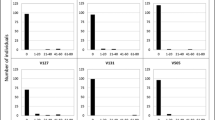Abstract
Farmer's cattle were treated with triclabendazole and used as tracer animals to detect new infections with Fasciola gigantica in three villages located on the bank of the Bassac River (a major tributary of the Mekong River) and in a fourth village located on farmland away from the river, from April 1999 until January 2001. The month of infection was estimated by subtracting 4 months from the date when eggs of F. gigantica were detected in faeces. Farmers were interviewed each month to record the nature of the agricultural and animal husbandry activities that occurred during the previous month, especially events that might have exposed cattle to infection with F. gigantica. Results support the conclusions that infection of cattle in riverbank villages acquired from about August or September until November originated from herbage and water in irrigation canals and dams on the riverbank, and that the progressively increasing monthly incidence from December until April (up to 87% per month in April 2000) was derived from herbage and water in recently harvested rice fields and lakes adjacent to the riverbank. The abrupt cessation of new infection in riverbank villages in May coincided with flooding of low-lying land, the movement of cattle to land above flood height on the riverbank, and a change of diet to dry-land crop residues, stored dry rice stalks, and herbage and water that were unlikely to contain metacercariae. It was concluded that snails in dams and canals on the riverbank became infected with F. gigantica after cattle were moved to the riverbank in May, and cercariae shed from these snails provided the new infections that occurred in cattle in August and September. In the village located away from the river, infection of cattle between September and March coincided with the rice harvest, supporting the conclusion that feeding of fresh rice stalks and stubble after the rice was harvested was the main source of infection. The low monthly incidence observed (up to 6.4% per month) was consistent with the hypothesis that snails did not survive in the dry rice fields between crops and that few snails would have been available from the small number of aquatic refuges that persisted through the dry season to recolonize rice fields during the wet season. Between April and August there was no opportunity for new infection because cattle were fed forage from around houses and headlands, and on dry-land crop residues and stored dry rice stalks. Control of fasciolosis was proposed using a single treatment of cattle with triclabendazole in riverbank villages in May when cattle were moved to the riverbank, and after harvest of the last rice field in villages located away from the river.
Similar content being viewed by others
References
Molina, E.C., Gonzaga, E.A. and Lumbago, L.A., 2005. Prevalence of infection with Fasciola gigantica and its relationship to carcase and liver weights, and fluke and egg counts in slaughter cattle and buffaloes in Southern Mindanao, Philippines. Tropical Animal Health and Production, 37, 215–221
Roberts, J.A. and Suhardono, 1996. Approaches to the control of fasciolosis in ruminants. International Journal for Parasitology, 26, 971–981
Spithill, T.W., Smooker, P.M. and Copeman, D.B., 1998. Fasciola gigantica: epidemiology, control, immunology and molecular biology. In: J.P. Dalton (ed.), Fasciolosis, (CABI Publishing, Wallingford, UK), 465–525
Tum, S., Puotinen, M.L. and Copeman, D.B., 2004. A geographic information system model for mapping risk of fasciolosis in cattle and buffaloes in Cambodia. Veterinary Parasitology, 122, 141–149
Waruiru, R.M., Kyvsgaard, N.C., Thamsborg, S.M., Nansen, P., Bøgh, H.O., Munyua, W.K. and Gathuma, J.M., 2000. The prevalence and intensity of helminth and coccidial infection in dairy cattle in central Kenya. Veterinary Research Communications, 24, 39–53
Author information
Authors and Affiliations
Corresponding author
Rights and permissions
About this article
Cite this article
Suon, S., Hol, D., Siek, S. et al. Seasonal differences in the incidence of infection with Fasciola gigantica in cambodian cattle. Trop Anim Health Prod 38, 23–28 (2006). https://doi.org/10.1007/s11250-006-4340-5
Accepted:
Issue Date:
DOI: https://doi.org/10.1007/s11250-006-4340-5




